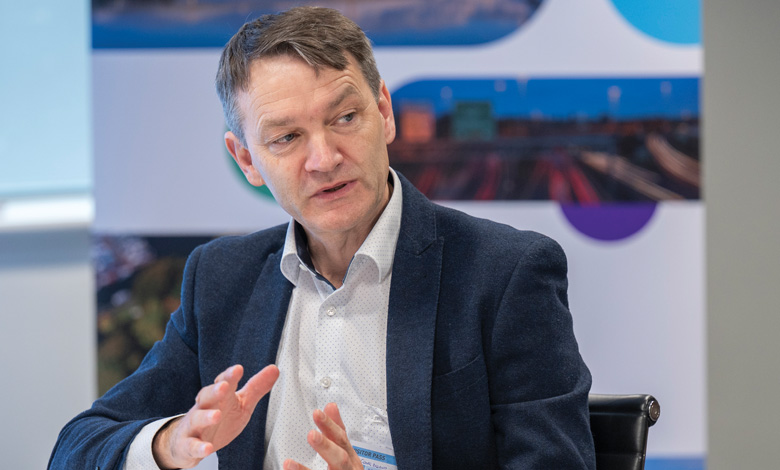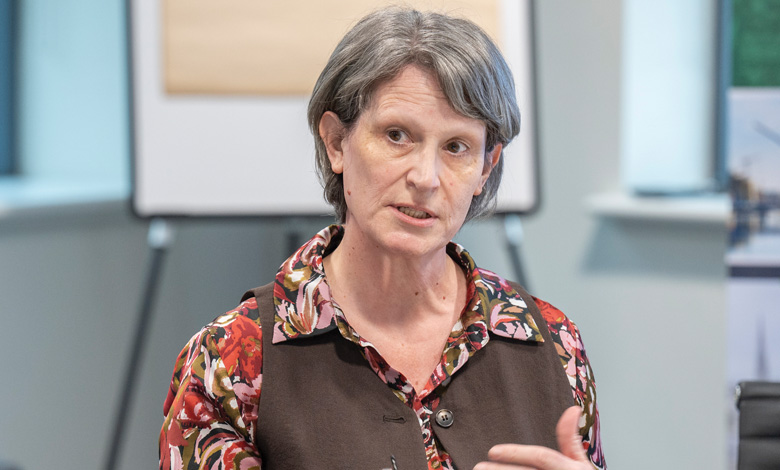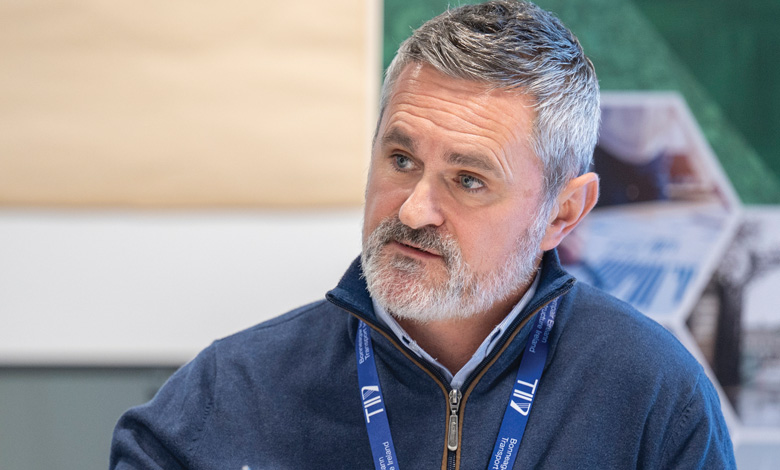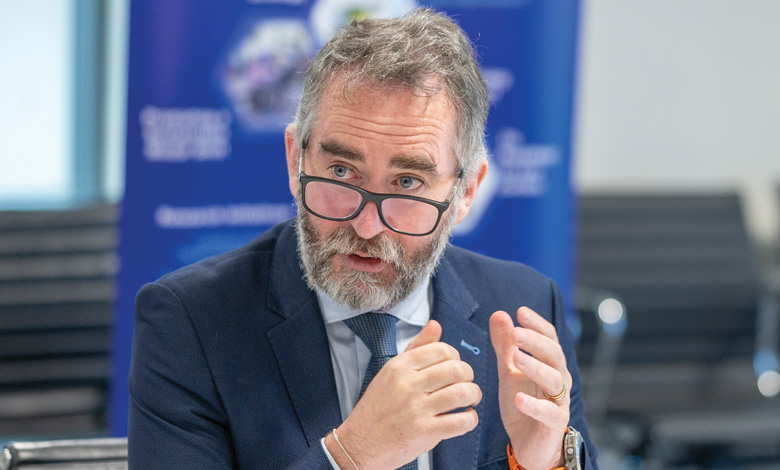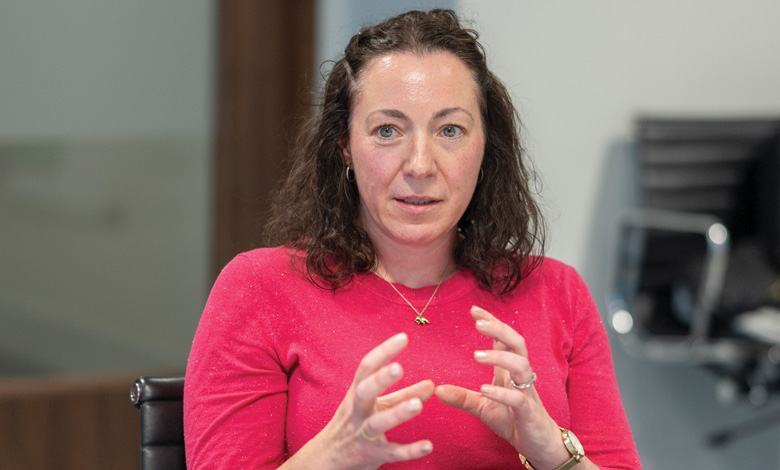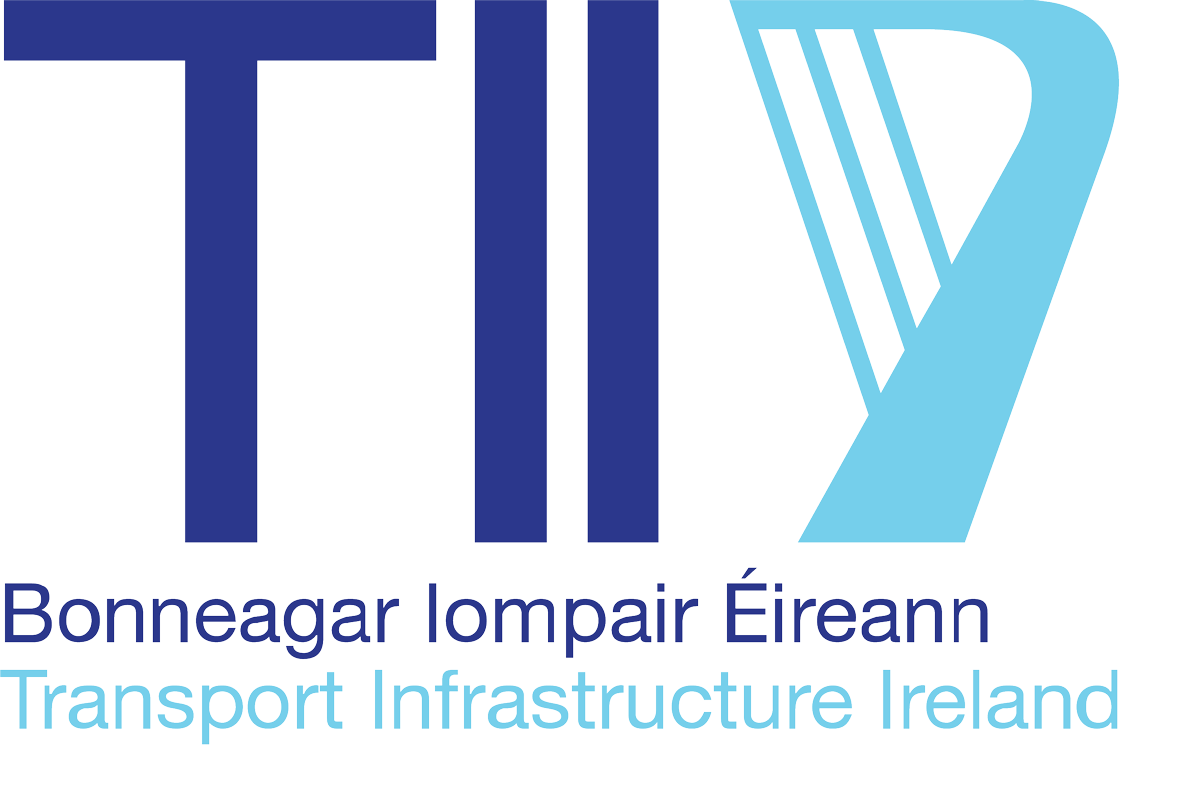Ensuring the climate resilience of the national road network

Transport Infrastructure Ireland (TII) hosted expert stakeholders from across the public and private sectors and academia to discuss how to ensure the climate resilience of the national road network.
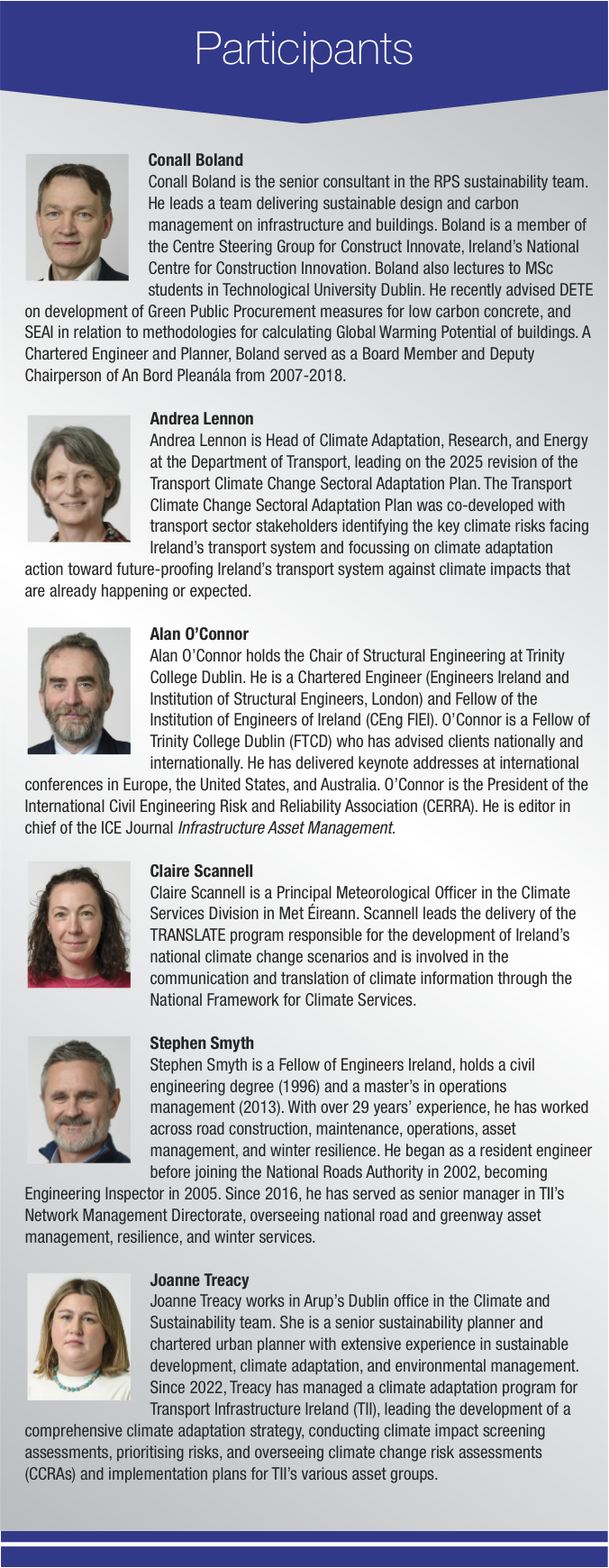
Based on the most recent climate projections, what are the most significant likely stresses for Ireland’s national roads over the next 20 to 50 years and how should we prioritise resilience measures?
Stephen Smyth
The impact of flooding on operations and national road infrastructure is the predominant risk identified in our recently-completed Climate Adaptation Implementation Plan for national roads. There are other risks that need attention such as hot and cold temperatures, rising sea levels, and slope failures. With the assistance of organisations such as Met Éireann and the TRANSLATE work they are doing, we will focus on these areas over the coming years to strengthen the resilience of the national road network.
Andrea Lennon
Development of the Climate Change Transport Sectoral Adaptation Plan involved identification of 150 hazards, narrowed down to 49 priority impacts assessed across all transport modes, with a whole-of-network approach, and consideration to cross-sectoral and cascading risks, and the impact on vulnerable groups and places. On roads specifically, hazards arise from climate change impacts like flooding, storms, cold spells, and coastal erosion.
Alan O’Connor
Risk-based prioritisation of intervention measures is critical and this must be assessed using quantitative analysis. Central to this is the comprehensive framework for vulnerability assessment being developed by TII. It is crucial to quantify the impact of investment on both risk and resilience to understand how investment must be prioritised. Enhancing resilience requires additional funding and that needs to be recognised by government.
Claire Scannell
The risk level changes depending on the scenario you assess. The National Climate Change Risk Assessment report for example says to adapt for a global warming of 2 degrees Celsius (or RCP 4.5) but prepare for a global warming of 4 degrees Celsius (or RCP 8.5) so we understand the full range of potential outcomes. The TRANSLATE climate change projections show that Ireland could become wetter in the future, particularly in winter and spring. They also show that for scenarios with a global warming above 2 degrees Celsius, Ireland’s summers could become drier. Wetter winters and drier summers both can affect soil moisture for example which can impact roads. Storms with greater peak windspeed could also become more frequent in the future. Combining this future hazard information with exposure of the system to the climate hazard and vulnerability of the system we can formulate an indicative understanding of risk associated to climate change.
Joanne Treacy
Key likely stresses include overwhelmed drainage systems, loss of bridge structural integrity from scour, and maintenance challenges on regional and local roads. Furthermore, Storm Éowyn is a good example of compound events and cascading impacts. Some impacts on the national road network included bridge closures, road blockages, fallen trees, damaged assets, sign failures, and disruption. It is also important to consider transboundary climate risks. Storm Darragh in December 2024 highlighted Ireland’s vulnerability of supply chains and passenger movements, when marine infrastructure at Holyhead in the UK was damaged, causing significant impact in Ireland. This highlighted the need for contingency planning to build our economic resilience.
Conall Boland
We do not have all the solutions yet, so we need to invest more and focus on resilience and adaptation. We need to examine storm events to map out vulnerable elements of the road network that may cause more difficulty if they are compromised. We must assess portions of the national network to determine which are more critical for emergency services, communications, and power systems. We must also ask how we prioritise resilience measures.
“What we have currently is adequate for day-to-day events but as weather events become more extreme and intense, we must ensure the roads we build now are fit for the future.”
Conall Boland
With more frequent extreme weather events, how do we expect road infrastructure performance and deterioration to change? What asset management strategies could realistically extend service life under these conditions?
Andrea Lennon
We are talking about chronic hazards over time as well as acute hazards arising from extreme weather events. It is very important to integrate climate risk into asset management systems, both in the ongoing maintenance of those systems, and the design standards and materials that are used. There must be regular monitoring of the network to identify vulnerabilities and where there is damage. In that way, risk assessment, monitoring, and forecasting can help to prioritise planned activity and resources. The Sectoral Adaptation Plan identifies the importance of nature-based solutions, with co-benefits for the environment, within adaptation of the transport network.
Stephen Smyth
In the last three years, we have published an asset management strategy, plan and framework. We are at the point where we need to embed climate change resilience into these strategic documents. Specifically, we need to focus on infrastructure condition, exposure, and vulnerability to severe or even catastrophic events. Operational capacity during extreme weather events, and our ability to recover quickly after these events, must also be strengthened. We operate under tight budgets; trying to deal with climate change and the resilience required to recover after severe events is something that requires adequate funding and resources to manage properly.
Alan O’Connor
We have done a lot of work in collaboration with TII around building Markovian models which predict the rate of the deterioration of assets going forward. We had a project a few years ago which looked at how the transition rate between condition states is going to increase due to climate change. That will require budgeting and forward planning from TII to be able to consider what they need to maintain the network at the level of service which the public requires. We need a multi-criteria optimisation framework to account for this.
Conall Boland
One critical aspect for this is the monitoring and inspection of assets. Currently, the pavement condition on the national road network is examined every year. This is the business-as-usual model, and we need to think of ways to enhance this monitoring effort in the context of more extreme weather events. One example of this is mapping vulnerable trees along a route and conducting wider risk assessments, and making more pro-active interventions based on information collected.
“The Sectoral Adaptation Plan identifies the importance of nature-based solutions.”
Andrea Lennon
Stephen Smyth
In terms of plans in place, we have mapped the criticality of our infrastructure and are now starting to look at how exposed and vulnerable that infrastructure is to the various hazards we have identified in our implementation plan. This was the first year we used an AI application for surveying our national road and greenways networks, so we are investigating how this might assist us in identifying locations on our networks that are exposed to climate change risks. In time, we hope this will lead to a significant improvement in our understanding of our infrastructure and how vulnerable or exposed it is to climate change.
Joanne Treacy
The impact on performance and deterioration will vary based on location, and the type of sub-networks. We know that there will be an impact, but we do not know exactly how much this will be. In terms of asset management strategies, embedding climate scenarios into Pavement Management Systems (PAMS) will have an important role to play. Installation of cost-effective temperature sensors that track road temperature and weather event data would also help.
What innovations in climate and weather forecasting could help road operators anticipate risks more effectively?
Claire Scannell
There is a lot happening in this space which could be beneficial for this sector. Within forecasting, for example we can improve the high-resolution convection permitting models which resolve thunderstorms and localised intense rainfall events. This can improve flash flood responses, improve local drainage, and help with forecasting. Met Éireann is constantly looking to improve and update its high-resolution forecast model to better resolve and predict these processes. There is also a move away from traditional style forecasting, towards impact-based forecasting and warnings. This means that instead of just focusing on the actual forecast, there would be a focus on potential impacts for sectors associated with the forecast. This can be tailored to specific sectors. There is also a UN initiative called Early Warnings for All. This is a multi-hazard approach which takes us beyond just having the information, communicating it effectively and strategically.
Another innovation is updating and improving our radar network which will give us improved observations which will underpin the model output. In terms of future climate the TRANSLATE programme is currently updating the national climate change projections in line with the current IPCC report as well as developing a high-resolution annual to decadal dataset for Ireland. There will also be a focus on quantifying uncertainty as well as how extreme events could change under different climate change scenarios.At the European level there is the development of the adaptation digital twin from the DestinE programme that could prove useful for understanding different adaptation strategies for different climate change scenarios within different systems.
“Trying to deal with climate change and the resilience required to recover after severe events is something that requires adequate funding.”
Stephen Smyth
Stephen Smyth
The availability of high-resolution forecast and climate scenario modelling is of great interest to us in TII, and it will enable stronger risk anticipation and allow us to manage infrastructure renewal and investment in a more effective manner. Over the years, we have looked at things like route-based forecasting, which is good, but it is focused on the operational needs of a particular area rather than long term climate change scenarios.
Conall Boland
Regarding communication with both the road network manager and the road user; the framework is probably not as sophisticated as it can be. There are other channels we can use to warn people who will be directly affected by events on a particular stretch of road, because we have more data available to us. The key is communicating to people.
Alan O’Connor
What Claire says about impact-based forecasting is very important, as is the integration of AI and machine learning. This is critical to understanding how the network will perform when there are weather emergencies, especially with us probably soon to have access to higher-resolution data sets which will enable spatial and temporal analysis. The point on digital twins is critical and it will allow us not just to understand an event, but to simulate scenarios that we want to consider so that we will understand how the network will perform.
“The integration of resilience measures into funding appraisals and performance frameworks is critical.”
Alan O’Connor
Andrea Lennon
There is a high level of embedded institutional recognition of climate science and forecasting within the climate adaptation planning process. Development of the Sectoral Adaptation Plan has relied on the best data available, as well as a process of ‘ground-truthing’ through workshops with transport stakeholders and operators. The other critical aspect is the further development of technology to support forecasting, monitoring, and asset management. I think AI will be a very powerful tool in this regard.
What new design solutions could help embed climate resilience into road asset management, planning, and delivery?
Joanne Treacy
This is not just a technical challenge, it is a cultural one too, which needs a shift in mindset from reactive maintenance to proactive adaptation. Resilience requires a blend of physical, operational, and technological measures; especially when some physical interventions may be unfeasible or extremely disruptive. Designers need to ensure redundancy can be built into the system. They could consider modular components and flexible designs for upgrades. Nature-based solutions will be key. This encompasses blue and green infrastructure such as bioswales, roadside planting, and living barriers. All enhance water absorption, reduce urban heat, and support biodiversity. These solutions also offer co-benefits for air quality and aesthetics.
Conall Boland
Elements of the current design standard may need to be reviewed and changed due to new climate information and patterns, particularly rainfall. What we have currently is adequate for day-to-day events but as weather events become more extreme and intense, we must ensure the roads we build now are fit for the future. Our standards need to be tested against future climate scenarios. We work in Scotland where it has changed from a 100-year event to a 200-year design event for rainfall; that ups the ante regarding capability.
“Climate resilience should be embedded within national policy itself for example within policies such as the National Adaptation Framework; National Development Plan; and the NTA Frameworks and strategies.”
Claire Scannell
Alan O’Connor
That piece around climate adaptive design, revision to our design standards, performance-based design standards, and reliability-based design is critical. Using climate resilient and low-carbon materials is very important but we must ensure that performance and durability do not suffer. Joanne made a great point about nature-based solutions, but we must also be open to hybrid solutions. Nature-based solutions will not be a panacea. Educating the next generation of engineers who must consider climate adaptation is crucial.
Stephen Smyth
It is vital that we take a modular or sequential approach. Our implementation plan focused on a dynamic adaptive policy pathway approach that allows us to manage the uncertainty in long term future planning. As we build more confidence around future scenarios and collate more climate change data, we can adapt our infrastructure, operations, and systems sequentially as we move through multi-year plans. This approach ensures we invest in the right area at the right time.
Andrea Lennon
It is not just about technical solutions there is a cultural aspect to climate adaptation as Joanne said earlier. There needs to be more opportunities for accessing cross-sectoral data and for knowledge sharing. The more collaboration we engage in, the more we can build shared learnings and find solutions which are not purely technical.
How can national policy and governance structures evolve to ensure resilience is not just reactive but systematically integrated into planning, design, maintenance, and funding of the road network?
Stephen Smyth
The Sectoral Adaptation Plan developed by the Department of Transport provides agencies and stakeholders with a clear framework to build upon. It is a key foundation for our own strategy and implementation plans for the coming years. The sectoral plan will have a significant positive impact on Transport Infrastructure Ireland’s adaption work.
Andrea Lennon
The overall aim of the Sectoral Adaptation Plan is to promote the mainstreaming of climate adaptation and support the agency of transport operators. Overall, 40 adaptation actions were co-developed with stakeholders in the Plan, 14 of those are cross-cutting with network-wide relevance and six actions concern the road sector specifically. The plan enables embedding of climate adaptation within asset management systems. Aside from NDP and budgetary funding, actions in the Plan enable exploration of alternative financing or EU funding possibilities. It is not only about the quantum of investment, but also the streamlining and targeting of investment where it is most needed.
“Resilience requires a blend of physical, operational, and technological measures; especially when some physical interventions may be unfeasible or extremely disruptive.”
Joanne Treacy
Alan O’Connor
The integration of resilience measures into funding appraisals and performance frameworks is critical. We need to be able to: quantify resilience and have useful indicators to do so; an ability to quantify risk reduction in different areas of the network, communities, and vulnerable sectors; quantify the risk reduction we spend on reliability-based performance targets; and integrate these targets to optimally target funding. That will enable us to ensure funding will reward proactive adaptation measures, not just a post-recovery spend. We saw that with Storm Éowyn. We spent a huge sum of money in the recovery operation. Whereas, if we had a resilience framework, which considered the four Rs of resilience namely: Robustness, Redundancy, Resourcefulness and Rapidity, we could achieve a more optimal recovery process.
Claire Scannell
Climate resilience should be embedded within national policy itself for example within policies such as the National Adaptation Framework; National Development Plan; and the NTA Frameworks and strategies. These provide the steer to include climate resilience into planning and decision-making. Strengthening institutional coordination is very important. Within the climate services community for example there are a lot of diverse actors similarly to the transport sector. Met Éireann established the National Framework for Climate Services (NFCS) with an inter-agency steering committee to provide cross sectoral coordination for the community. This has been beneficial in bringing people together, building relationships and identifying synergies.
Joanne Treacy
On Alan’s point about the interdependencies with other sectors, I think that is key. The next step needs to be about moving from theory to practical ways of looking at interdependencies with other sectors.
Examples include; how do you pay for cross-sector resilience, responsibility for ownership of cascading and cross-sector climate risk, and how organisations collaborate on this effectively.
Conall Boland
If we look at Hurricane Sandy, which devastated residential areas of New York in 2012, interconnected communities were most adept at resilience. That interconnectedness goes back to the human factor. We do well on the response to storms through forecasting and inter-agency cooperation, but we should shift that now to resilience building and improve knowledge-sharing and knowledge-transfer. A lot of resilience within the national network is underpinned by local authorities and we should avoid decoupling local authorities because they do much of the preventive work on the ground that we rely on.

